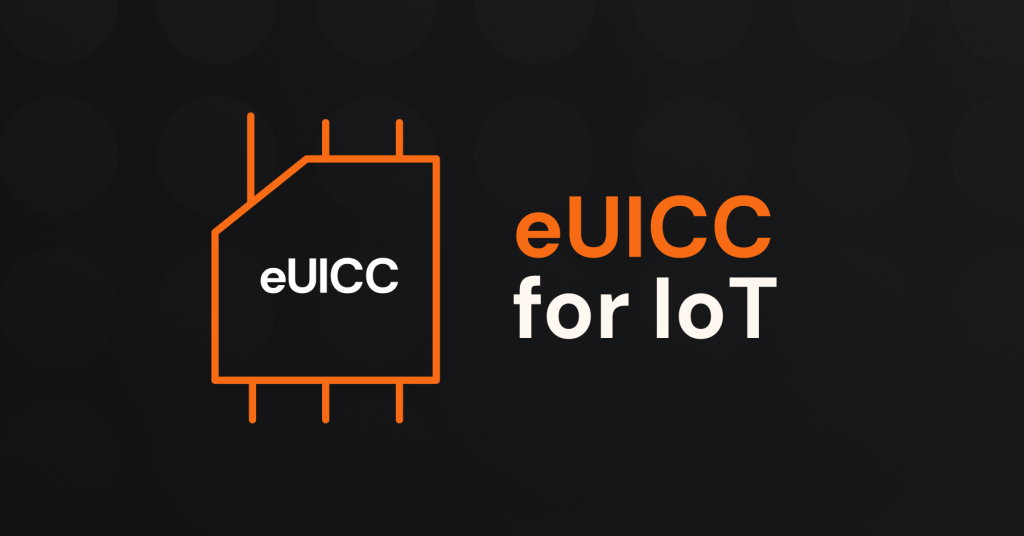A Multi-IMSI SIM (Multiple International Mobile Subscriber Identity) is a single physical SIM card provisioned at manufacturing with several IMSI profiles.
For IoT, multi-IMSI (SIM) technology is a powerful, SIM-centric solution to solve coverage gaps and unpredictable roaming costs from standard IoT SIM cards that lock a device to access only one mobile network.
Multi-IMSI SIMs offer an pragmatic way to ensure devices always connect on the best local network without the complexity or cost of multiple physical SIMs or high-fee roaming contracts. This article explains what multi-IMSI is, how it works under the hood, why it’s an ideal fit for certain IoT use cases, and what are the alternatives that extend other network benefits.
Table of Contents
Key takeaways: Multi IMSI (SIM)
- The problem: Standard SIMs lock IoT devices to a single network, creating coverage gaps and unpredictable costs for global deployments.
- The device-centric solution: Multi-IMSI (SIM) technology addresses this by placing multiple network profiles on a single SIM, giving the device network choice.
- The engineering trade-off: This approach embeds complexity and switching logic directly onto the device or SIM card.
- The architectural question: This article explores the difference between solving connectivity challenges on the device versus solving them in the network core.
What is multi-IMSI?

Before understanding what a multi-IMSI SIM is, let’s first understand what the IMSI is. In simple terms, the International Mobile Subscriber Identity or IMSI is a set of numbers that identify the SIM card user.
A multi-IMSI SIM card contains multiple IMSI profiles within a single physical form factor where each IMSI is a unique 15-digit identifier composed of:
- Mobile Country Code (MCC)
- Mobile Network Code (MNC)
- Mobile Subscription Identification Number (MSIN)
While a traditional SIM holds one IMSI (one carrier profile), a multi-IMSI SIM stores several pre-loaded network profiles. These profiles are stored into the SIM during manufacturing and cannot be changed over-the-air (OTA).
The technology anchors the connectivity logic and the portfolio of network choices directly to the physical SIM card.
How does multi-IMSI (SIM) technology work?
The operational mechanism of a multi-IMSI (SIM) is straightforward: to provide a device with a portfolio of network identities. The device itself is then responsible for selecting the optimal profile based on its environment (which may have implications on device power consumption, and needs further testing).
Network selection happens through switching logic that can be:
- Location-based: automatically switching to another network profile when crossing borders
- Signal-strength prioritized: selecting the strongest available network
- Cost-optimized: By switching to a local IMSI, the device registers on the network as a local subscriber, not a roamer, which may have more competitive data rates.
The responsibility for managing this switching logic and making the correct network choice falls entirely on the device’s firmware or application layer. The device evaluates available networks and selects the appropriate IMSI to use for authentication.
The selection process follows this sequence:
- The device scans for available PLMNs (Public Land Mobile Networks)
- It compares available networks against its stored IMSI profiles
- It selects and activates the appropriate IMSI based on programmed logic
- The device registers with the selected network as a local subscriber
Expert guide: Recommended reading
Read this article to find out how leaving PLMN lists blank reduces SIM registration times, saves power, and reduces the chances of a poor-quality connection.
Multi-IMSI (SIM) architecture

A multi-IMSI (SIM) is built on a standard UICC (Universal Integrated Circuit Card). The key architectural difference is that its software and file system are configured to manage multiple identities.
- Multiple IMSI storage: The SIM’s file system is configured to hold several IMSI profiles. There should be enough secure storage to hold
nIMSIs (typicallyn= 3–10) - Switching applet: An applet on the SIM, or logic on the device, manages which IMSI is active at any given time.
- No OTA changes: Profiles are static. Any addition/removal of IMSIs requires factory reprogramming.
- Other network-specific parameters: Including authentication keys for the respective network, and security algorithms and protocols.
- SIM form factor: The architecture is contained within standard SIM form factors (2FF, 3FF, 4FF), ensuring compatibility with existing cellular modems.
This architecture embeds the multi-carrier access logic directly onto the UICC, with the SIM presenting only one IMSI at a time to the network.
This makes the SIM an active component in network selection, where difference is entirely in the software layer and pre-loaded networks (and the IoT SIM form factor).
Learn more about other modern SIM form factors: SoftSIM vs eSIM vs iSIM
Benefits of multi-IMSI for global IoT deployments
Multi-IMSI (SIM) is a device-centric approach that addresses several critical challenges in IoT connectivity:
- Coverage issues:
A device can connect to the strongest available network signal within a location, reducing the risk of connectivity outages. - Data costs of roaming:
By connecting as a local subscriber, connectivity costs can become more predictable and manageable. - Network redundancy:
If a primary network experiences an outage, the device can automatically failover to an alternative network profile on the SIM. - Off-of-the-shelf solution:
Since the network is pre-determined prior deployment, this could shorten the time it takes to ship the products in the field. However, this may not be beneficial for fleets that require on-the-fly flexibility.
Expert recommendation:
In this report, find solutions to persistent IoT challenges:
- Learn IoT remote monitoring tools and techniques using our Insight Tools
- Transform device visibility from a ‘black box’ to crystal-clear insights
- Slash troubleshooting time from weeks to hours
Common use cases for multi-IMSI (SIM) technology
The out-of-the-box ease of multi-IMSI (SIM) technology makes it ideal for certain industries where IoT data coverage is non-negotiable.

Logistics and fleet management
- Ensures that vehicles and containers remain connected as they cross borders.
Automotive
- Provides network-independent connectivity required for smart connected vehicles.
Connected Cars are leading the way for connected mobility solutions across locations. Learn the technical decisions they made to build IoT for connected vehicles with flexibility in this webinar.
Asset-tracking
- Adds a layer of network reliability so that tracked assets can always report their location and status. (Read the solutions to overcome the most common asset tracking challenges for cellular IoT deployments, here.)
We hosted the first global asset tracking summit online, you can watch the full summit learnings for free.
The difference between Multi-IMSI vs. eUICC (eSIM)
It is critical to distinguish multi-IMSI from eUICC. While both enable multi-carrier connectivity, they represent two different philosophies of device-side intelligence.
- Profile Management: Multi-IMSI profiles are static and factory-loaded. eUICC allows new profiles to be downloaded and managed remotely.
- Flexibility: Multi-IMSI offers out-of-the-box reliability with a fixed set of networks. eUICC offers greater long-term flexibility.
Both multi-IMSI (SIM) and eUICC solve the connectivity problem by adding intelligence and complexity at the edge—either through pre-loaded profiles or remote management capabilities.

Compare alternative technologies to multi-IMSI with eUICC vs UICC in this technical guide.
Multi-IMSI alternative technology: moving the device logic from SIM to network
So far, we have talked about how the device or SIM holds the responsibility for network switching through multi-IMSI SIMs. This places a burden on the IoT device to house the logic, manage profiles, and handle failover.
An efficient approach is to move away from the SIM and into the network core itself to manage data transmissions and device resources.
For example, our implementation of the standard UICC is built on this principle. It eliminates the need for switching logic on the SIM card by shifting network routing decisions to a software-defined core network.
This network-centric architecture provides several advantages:
- A single global profile: One IMSI and one APN are used to connect to a network of over 600 MNOs globally.
- Less resource burden on the device: For resource-constrained devices that prioritize power efficiency, for example, moving the network logic to the network creates less data overheads that affect consumption.
- Platform agnostic: This network-based routing works for any SIM form factor, including traditional physical SIMs and software-based SIMs such as the SoftSIM.
This approach achieves the goal of global, multi-network connectivity without requiring multiple profiles on the SIM or fixed network profiles that can’t be reconfigured OTA.
Watch this webinar on-demand to learn how the Network Marketplace solves these challenges. A new way for IoT solutions to design connectivity to meet their business needs, with full control over data costs and device coverage.






